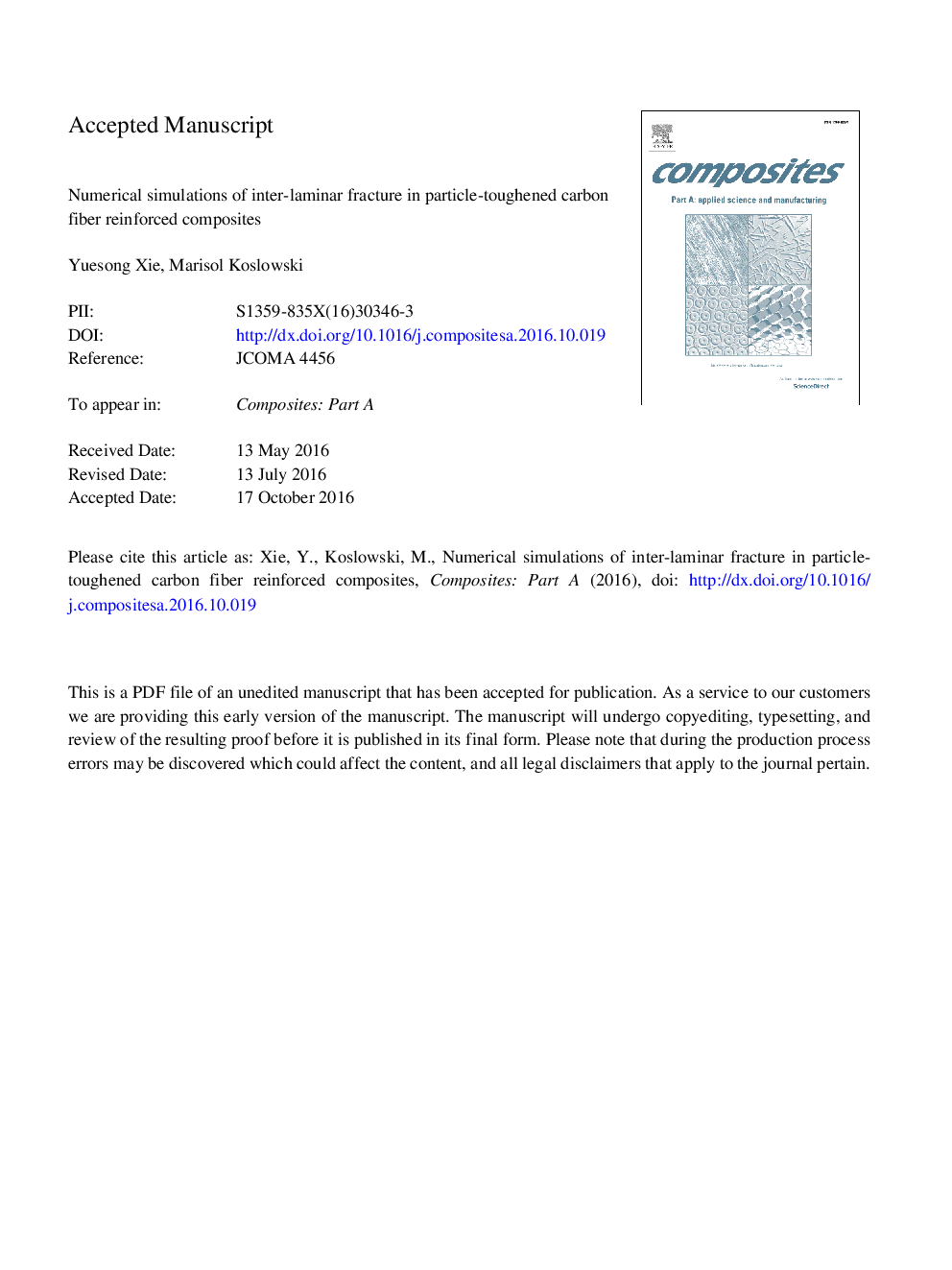| Article ID | Journal | Published Year | Pages | File Type |
|---|---|---|---|---|
| 5439689 | Composites Part A: Applied Science and Manufacturing | 2017 | 21 Pages |
Abstract
The most predominant failure mechanism in carbon fiber reinforced composites is delamination. Dispersed second phase particles have been added to the interlayer region to reduce this damaging effect. In this work a phase field damage model is used to study Mode I crack propagation in particle-toughened interlayers. The simulations show several damage mechanisms observed in experiments and the processes that produce crack growth. In particular, failure involves multiple micro-cracks forming ahead of the main crack tip that coalesce and lead to crack branching, deflection and the formation of ligaments. Additionally, increasing the particle stiffness and the surface energy of the matrix-particle interface do not lead to an improvement of the interlaminate toughness as the fiber-matrix interface becomes a preferential path for the crack through the nucleation of extended delamination zones ahead of the crack tip.
Related Topics
Physical Sciences and Engineering
Materials Science
Ceramics and Composites
Authors
Yuesong Xie, Marisol Koslowski,
